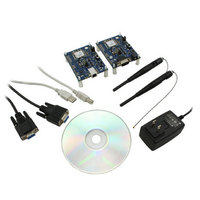DVK-PRM112 Laird Technologies, DVK-PRM112 Datasheet - Page 16

DVK-PRM112
Manufacturer Part Number
DVK-PRM112
Description
KIT FOR PRM112
Manufacturer
Laird Technologies
Series
FlexRF™r
Type
Transceiver, FHSSr
Specifications of DVK-PRM112
Frequency
2.4GHz
Output Power
50 mW
Antenna
U.FL Coaxial
Silicon Manufacturer
Laird Technologies
Kit Application Type
Communication & Networking
Application Sub Type
RF Module
Kit Contents
2x RF Module, 2x Adapter Board, CD, 2x AC Power Adapters, 2x DB9
Rohs Compliant
Yes
For Use With/related Products
PRM112
Lead Free Status / RoHS Status
Lead free / RoHS Compliant
Lead Free Status / RoHS Status
Lead free / RoHS Compliant, Lead free / RoHS Compliant
Available stocks
Company
Part Number
Manufacturer
Quantity
Price
Company:
Part Number:
DVK-PRM112
Manufacturer:
LAIRD
Quantity:
2
LT2510
Wireless Module
THEORY OF
OPERATION
13 www.lairdtech.com
Broadcast Attempts (EEPROM 0x4D)
When transmitting broadcast packets, the RF packet is broadcast out to all eligible receivers on the network.
Broadcast Attempts is used to increase the odds of successful delivery to the intended receivers. Transparent to the
OEM host, the transmitter will send the RF packet to the receivers. If a receiver detects a packet error, it will throw
out the packet. This will continue until the transmitter exhausts all of its attempts. Once the receiver successfully
receives the packet it will send the packet to the OEM host. It will throw out any duplicates caused by further
Broadcast Attempts. The received packet will only be sent to the OEM host if it is received free of errors. Because
broadcast packets have no RF acknowledgement, each packet is transmitted the number of times specified by
Broadcast Attempts. This makes for very inefficient use of the available bandwidth; therefore, it is recommended that
Broadcast Attempts be set as Low as possible and that broadcast packets be limited in use.
Note:
Range Refresh (EEPROM 0x3D)
Range refresh specifies the maximum amount of time a transceiver will report In Range without having heard a
server’s beacon. It is adjustable in hop periods. Do not set to 0.
RF Channel Number (EEPROM 0x40)
This product uses FHSS (Frequency Hopping Spread Spectrum) protocol in which the transceiver will communicate
using frequency “bins” spaced throughout the frequency band. Therefore, RF Channel Number specifies a unique
pseudo-random hopping sequence.
Mode (Server/Client) (EEPROM 0x41)
The server controls the frequency hop timing by sending out regular beacons (transparent to the transceiver host)
which contain system timing information. This timing information synchronizes the client radio frequency hopping to
the server. Each network should consist of only one server.
Max Power (EEPROM 0x63)
The transceiver has an adjustable RF output power. Power can be adjusted dynamically to optimize communications
reliability and conserve power. Each increment represents a 3dBm 50% decrease in power. The radios have a
maximum input RF level of 0dBm. When operated very close together at full power the radio’s receiver can saturate
and no transmissions are possible. If the distance between the transmitter and receiver is very short (generally less
than 2ft (.6m) with 2.5dBi antennas), the Max Power should be reduced.
Random Backoff (EEPROM 0xC3)
The transceivers utilize a Carrier Sense Multiple Access (CSMA) protocol with Random Backoff and a programmable
back-off seed. Therefore, in the event of a collision, the transceiver will back off and retry the packet. Specifically,
when two transceivers collide with each other (transmitting packets at the same time), each transceiver will choose
a random number of packet times that it will wait before retrying the packet. Ideally, they will each choose a
different number and will be successful in the next transmission. A good rule of thumb is to set Random Backoff
to a number slightly larger than the maximum number of transceivers that would be expected to be transmitting at
the same time.
System ID (EEPROM 0x76)
System ID is similar to a password character or network number and makes network eavesdropping more difficult.
A receiving transceiver will not go in range of or communicate with another transceiver on a different System ID.
System ID can be ignored on a Client by enabling Auto System ID
RF Profile (EEPROM 0x54)
RF Profile can be adjusted to provide a trade-off between throughput and range. Deciding which RF Profile to
choose depends on the individual application. Selecting a higher RF baud rate will provide increased RF bandwidth.
However, selecting the lower RF baud rate will provide significantly improved range. Selecting fewer hops provides a
shorter sync time, whereas more hops will provide better interference and collocated system immunity.
Destination Address
The Destination Address is simply the MAC (IEEE) address of the intended receiver on the network. In Addressed
Mode, the RF packet is sent out to the intended receiver designated by the Destination Address. Only the four
LSBs (Least Significant Bytes) of the Destination Address are actually used for packet delivery. This field is ignored if
Broadcast Mode, Auto Destination or Transmit API is enabled.
Setting to 0 is equal to 256.
Laird Technologies



















